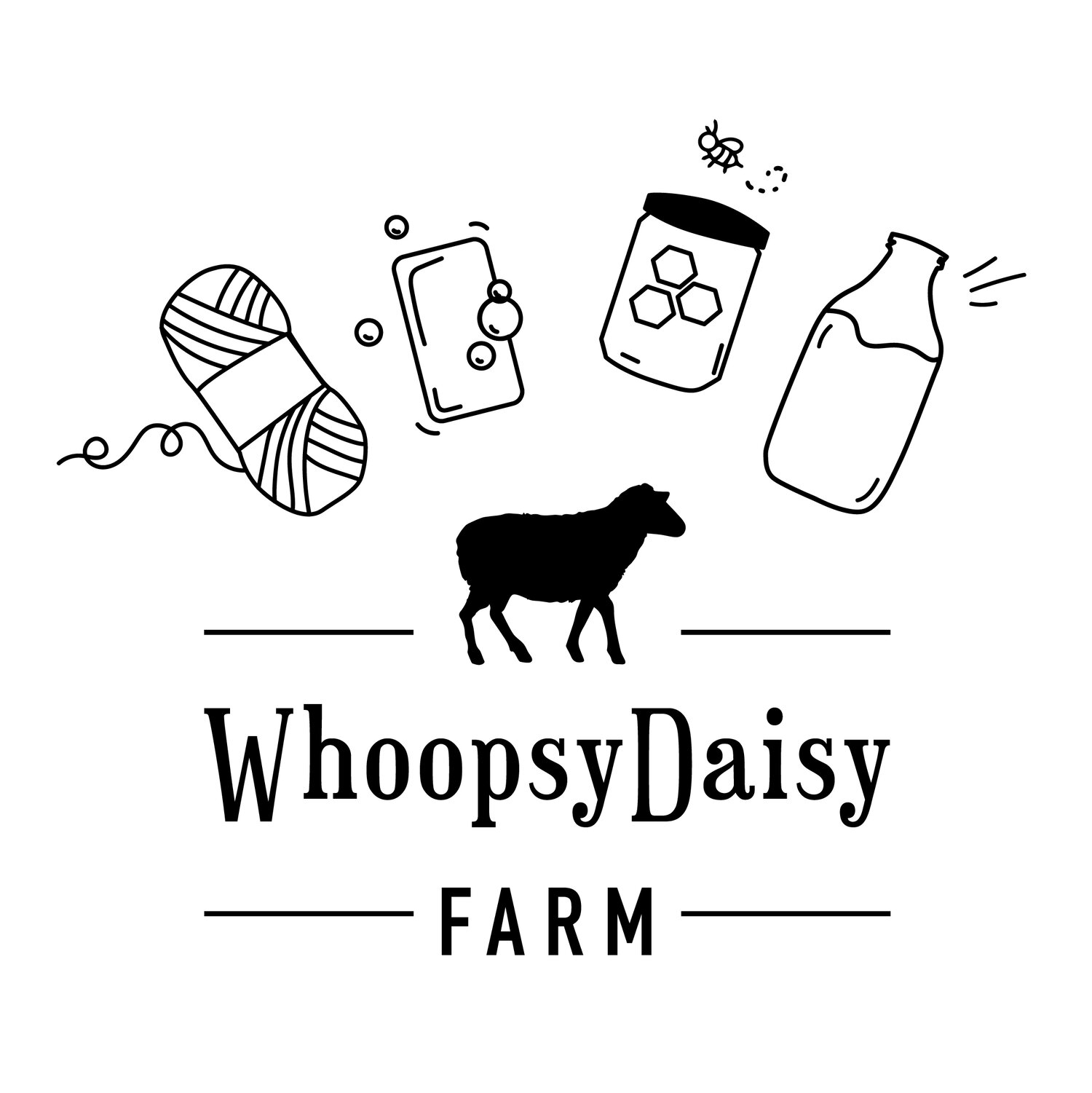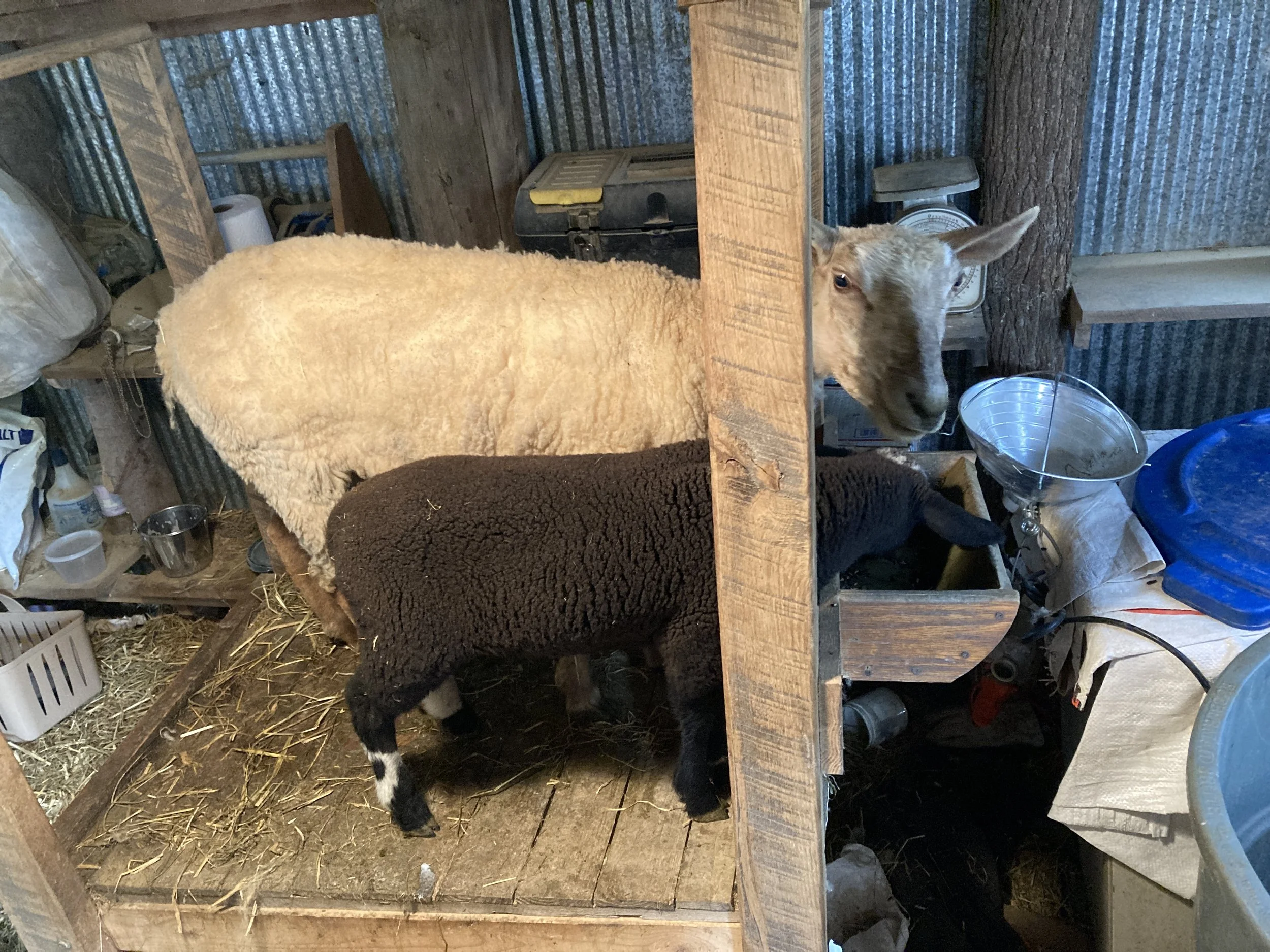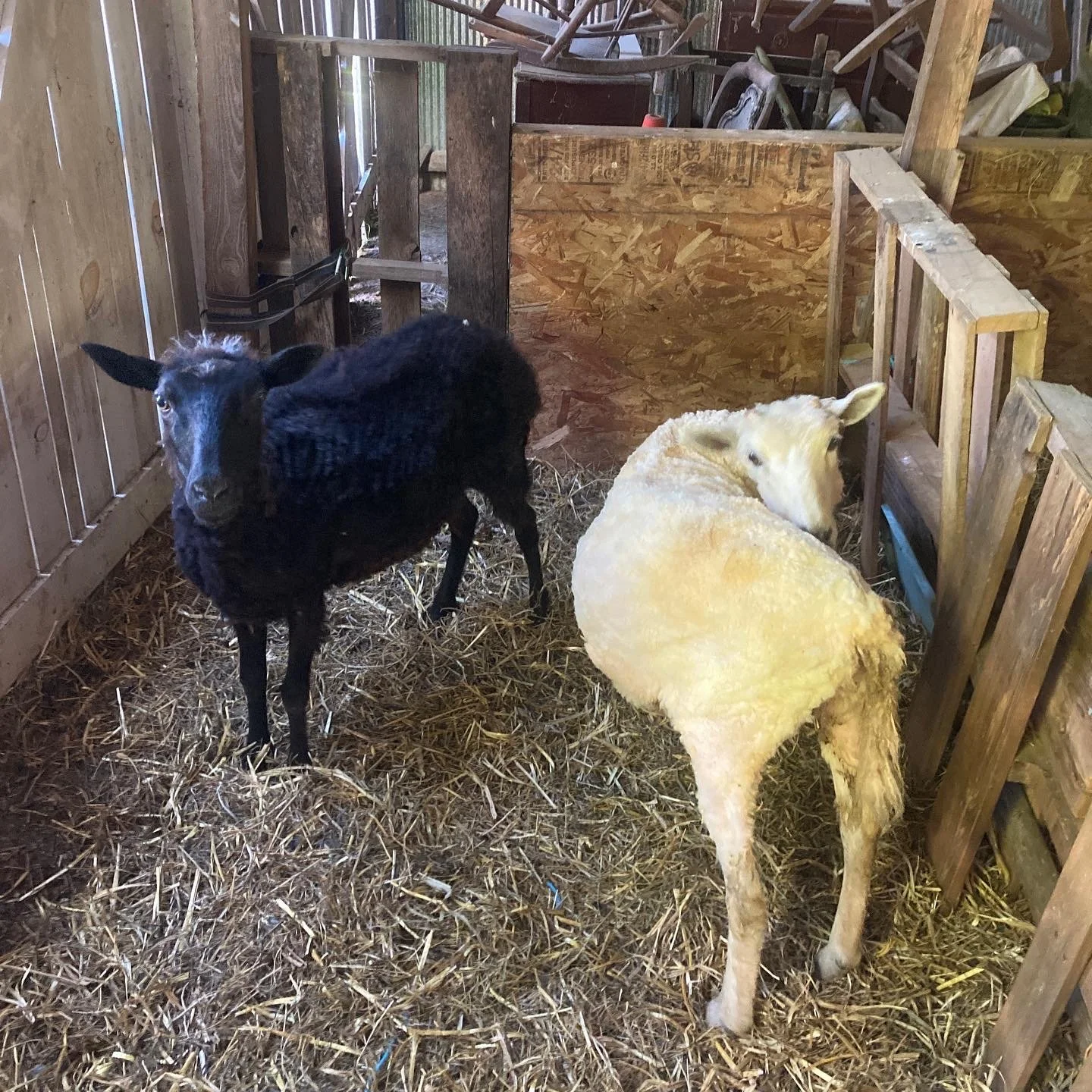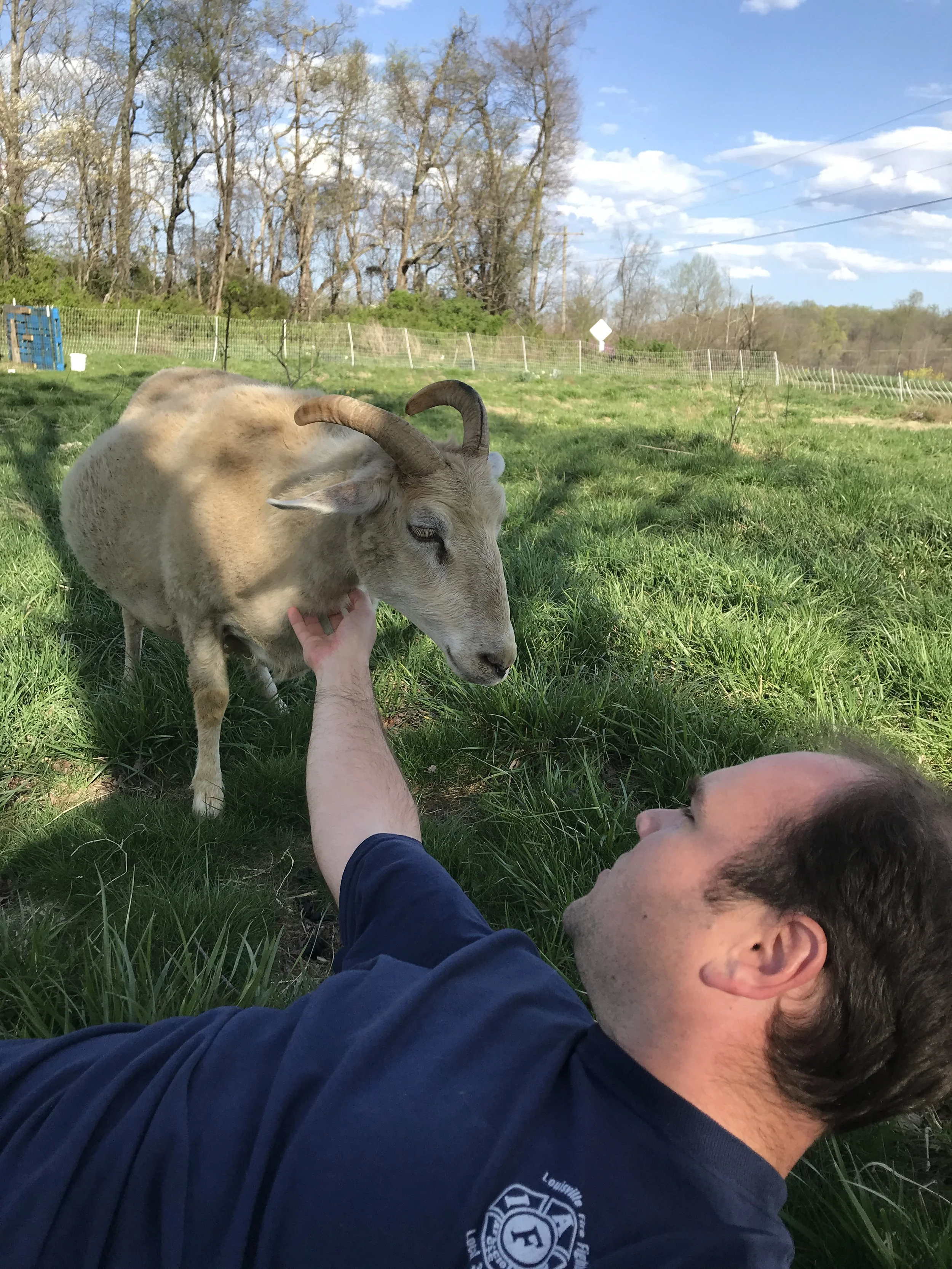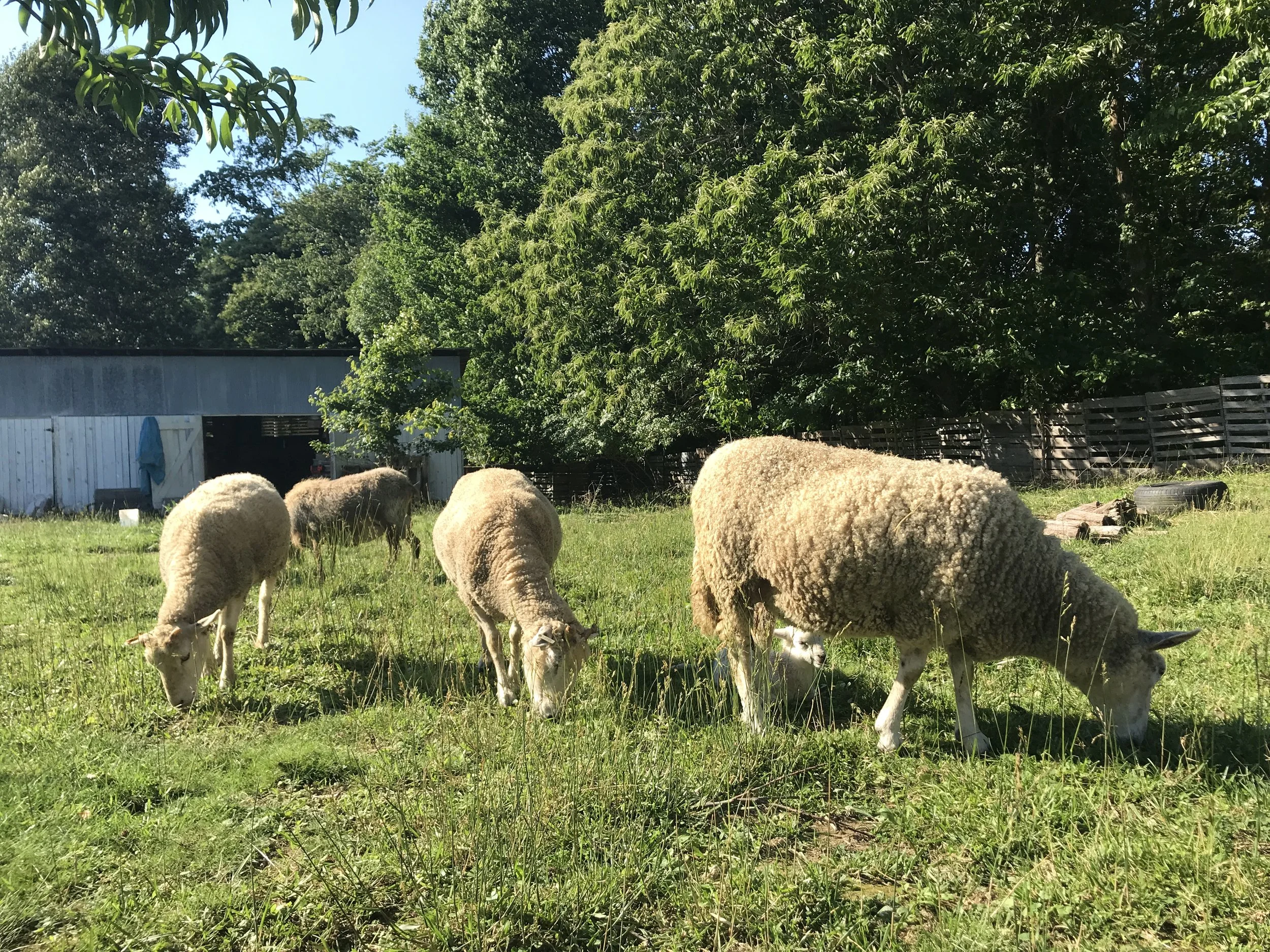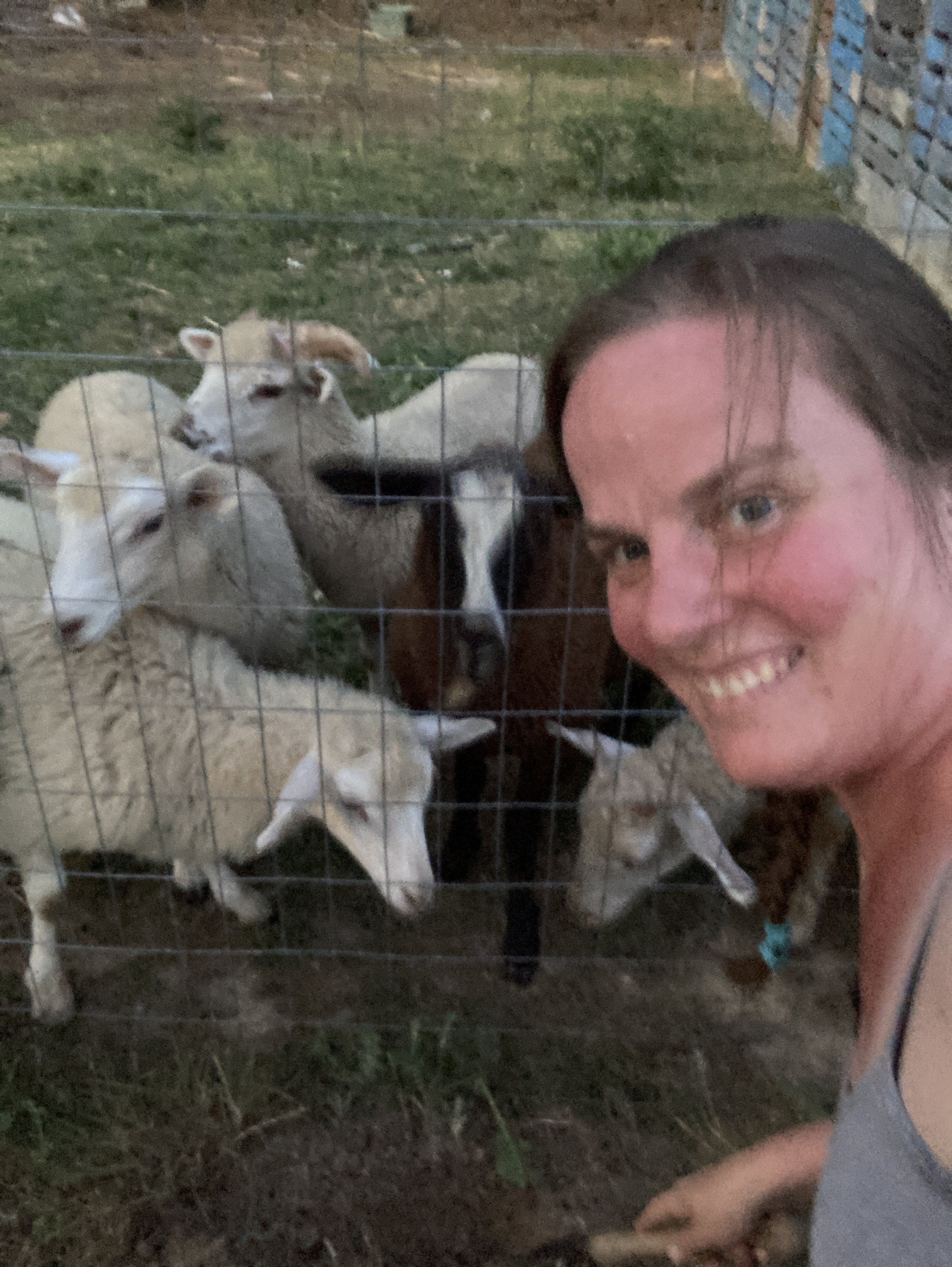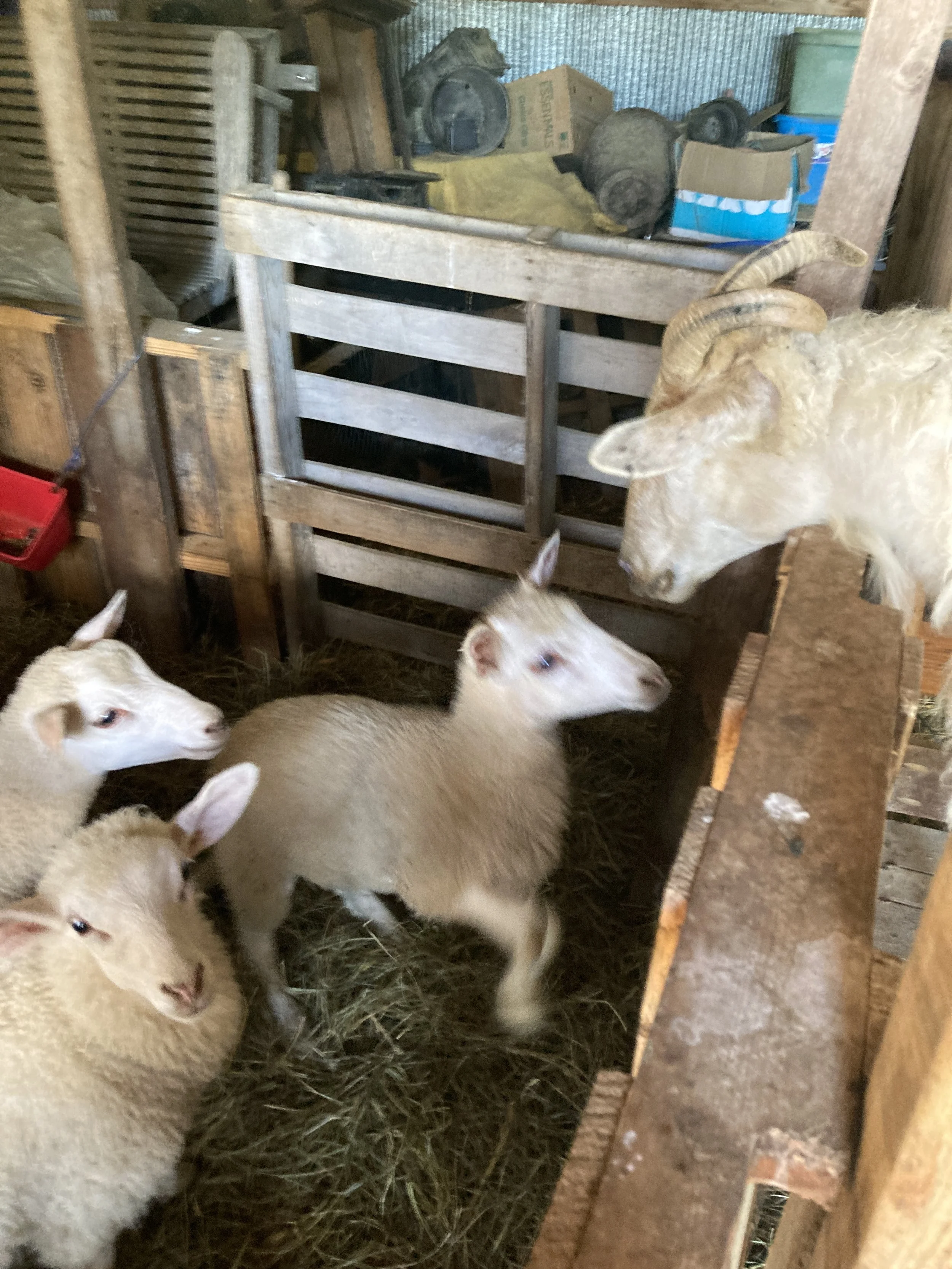How much milk do we get from our sheep
How much milk do you get from your sheep?
I get asked a lot how much milk I get from my sheep. The answer always is “Depends.” Which I feel irritated by - I want to give people a more exact answer. I’d love to give them a far more definite formula on how much milk to expect from a ewe per day. However, it is not that simple. I realize most folks are probably just trying to get a grid on how much milk to plan on, so they can decide if they want two sheep or twelve, or a sheep verses a goat or a cow. But I am painfully honest, and so never give them that kind of an answer.
Senga and Stella learning the ropes on our old Milking Stanchion set up - it was rather a cramped spot as you can see!
Because it really does just depend.
Ok you say, what does it depend ON??
In short, breed, feed, schedule, season, and lamb management.
Breed
Luna, a dairy mutt born on our farm, and Mithril, a purebred Gulf Coast Native born on our farm
My dairy mutts give a lot more than my Gulf Coast Native sheep, because they have been selectively bred to have larger teats, larger udders, longer lactation times, etc. My higher percentage East Friesan sheep produce more for longer than my lower percentage East Friesan sheep. So it will really depend on what breed of sheep you are looking at to know how much milk you are going to get.
If you use a non-dairy breed of sheep, your ewe will produce anywhere from a cup of milk per milking to a pint… probably. Again, I say this having milked a purebred Border Leicester who produced a solid quart per milking. Some ewes have lovely large udders and make great volume per day and have no ‘dairy’ lines whatsoever in their heritage.
Dairy ewes who fit breed standards typically produce at minimum a quart per milking - and that’s considered a not-great producer by some - to over a liter per milking. Now I will go ahead and give you the disclaimer that the ewes producing over a liter per milking must be BABIED because they are putting all their energies into making milk and have no time for things like common sense, parasite resistance, or predator avoiding. They are also on the highly expensive side of things, ranging in price from $500-$3,500; depending on breeder.
That aside, their milk is lovely and there’s lots of it.
I’m sorry I can’t give you more exact volumes and figures. For those who MUST have a general estimate, your ewe can produce anywhere from one cup to one liter of milk per day… with some variation.
2. Feed
A note about feeding my sheep: I do not feed my dairy animals corn and soy. I avoid soy because both Kyle and I have had hormonal health issues ever since we hit puberty, and soy is a really big culprit behind it (as are seed oils but I digress). Not only are you what you eat, but you are what you eat eats. If my ewe eats soy, then I’m getting side effects of soy in my milk. I can tell within a few weeks when I’m drinking milk from an animal who eats soy - and that’s even when the animal is certified A2A2, organic, pasture based, raw dairy… all the buzzwords.
I do not feed my ruminants corn because they are ruminants and not omnivores. A rumen is a big fermentation vat for grasses so that the animal can break down high fiber plants such as grass or hay or highly lignified weeds. Corn is a highly fermentable grain… it wants to ferment. The two just don’t go together.
But wait, you ask, I thought fermentation is good for you! Well it is when its PREdigested. Its not so great when you have a fast fermentation process happening DURING digestion. In humans it causes things like gas and leaky gut. In ruminants it causes things like… well, gas, leaky gut, lowered parasite resistance, etc.
When my girls are on corn I just notice their health goes downhill. They require more minerals, more supplements, more TLC.
Which is irritating, because corn and soy are some of the most easily acquired, cheapest feeds for any livestock.
Now, back to how feed effects milk production.
Were I to feed my girls corn and soy, I would probably double milk production because of the high protein and sugar content in the corn and soy. I would also highly increase my chances of mastitis, as the udders would be pumping out so much white gold.
Our ewe Sally checking out the picnic table to see if we have any form of food for her to steal. She’s stolen pizza slices from us before!
That being said, I know plenty of dairy shepherds who feed their ewes corn and soy and are happy with the results. And that’s fine. I am just not one of them.
If you feed your sheep you will most likely be within the quart to liter range of milk per milking. IF you don’t, you’ll likely fall somewhere around a quart per milking. You will also need to have some kind of substitution as both a stanchion bribe and a way to keep healthy weight on them as they feed you, their lambs, and themselves.
We personally do a blend of sunflower seeds, Alfalfa pellets, beet pulp, barely, oats, and flaxseed, and that has worked very well for us. I sometimes add a few things to the mix like dried comfrey or raspberry leaf when I can get it in bulk and we have extra money (Ha. That hasn’t happened in a few years tho…)
So far our flock has been small enough that we have just picked up 50ibs bags of feed from the Farm Superstores and mixed it ourselves. That is expensive and not practical long term, so we are in the process of trying to find a mill to just mix it all up for us. The trouble with that is you must have bulk-storage capacities. We have just gotten the capacity to bulk store feed in a way that is safe from mice, rats, and mold, so bear that in mind if you want to use a local mill. The best bulk-food storage I’ve seen is old chest freezers who have given up the ghost - they make GREAT animal feed storage. We are using 55 gallon metal drums that transported orange juice to schools. Find what works for you and go for it.
You will also notice a difference in milk production if your sheep are on fresh grass, eating dried hay, are eating pumpkins or not (pumpkins make AMAZING milk production) or have recently broken out of their fence and raided your veggie garden.
Schedule
Kyle relaxes with the sheep after a long shift. This is Sue, one of our first dairy sheep we bought and brought to the farm. She is Sally’s twin.
Kyle works emergency services and therefore does not have a dependable schedule. His schedule is typically more like a guideline than an actual SCHEDULE. This is another reason why we don’t push our critters to peak production via diet - peak producing animals have no flexibility when it comes to milking schedules. They HAVE to be milked very close to the same times every day or you risk issues like mastitis. Animals NOT pushed to peak production will give you a few hours flexibility without any detriment to their overall health. Their milk production will decline for about a week if you are too late or too early, but it will come back eventually.
As an Emergency Service Family, that’s just one of the sacrifices we make to serve our community - less milk when the schedule demands it. Yes I try and pick up the slack as much as possible when Duty Calls Kyle away from the farm. But some days I just can’t get to it all either.
So our schedule is not ye old typical dairyman’s schedule of milking at 4:30 am and pm every day 365 days per year… and to be honest I don’t want it to be… because that sounds horrible.
If you want to be that rigid in your schedule, you will know exactly how much milk you will get each milking and can plan accordingly. You will also get more milk overall in your milking season as you won’t have drop offs in production when your schedule fluctuates… nor will you receive a vehement baa-ing scolding when you finally DO make it to the barn from all the girls who really really really would like you to milk all that pressure off them.
Season
There is definitely a ‘peak production time’ with the lactation cycle, and there’s differences in butterfat content as well. Similarly to human mothers who breastfeed, a ewe will change her milk constitution based off the lamb’s needs. For example towards the end of lactation, when the lamb should be weaning and is eating a good deal of grass or hay, the milk will be lower in fat and more thin. It may foam in the bucket quite a bit more. Early in the lactation the butterfat will be high and it will thunk into the bucket with a heaviness that causes Kyle and I to salivate.
Actual seasons make a difference as well - is it cloudy rainy spring with shorter days, or is it a sunshiny summer day with long daylight hours? Are they eating green grass or have they been moved to the winter lot and are being fed hay? These will all cause dips and fluctuations in production.
To be honest, I haven’t paid as much attention to which dynamics effect volumes with milk in these particular areas, as they are completely outside of my control. I have noticed that hay milk seems to be creamier than grass milk, but the grass milk seems far more nutrient dense than hay milk… and that’s as far as I’ve gotten.
Our ewes enjoy the fast growing June grass - this is typically our peak milk production season.
Lamb management
Large commercial sheep dairies either sell or slaughter their lambs very quickly after their birth. Most of the milk replacer available in the US comes from China where slaughtering the lambs very quickly after birth is standard procedure so that the manufacturer can harvest all the colostrum and milk to be dried and sold to farm supply companies.
Let me say very quickly this is VERY MUCH NOT our policy at Whoopsydaisy Farm.
We do not remove our lambs from their mothers at all until the lambs are typically about a month old.
That being said, we still get milk from some of our ewes because the dairy mutts have been selectively bred to produce SO MUCH MILK that even twins can’t consume it all. So there’s enough to share.
We start separating lambs at night around a month old. The lambs are kept in the same paddock and barn as their mothers, in a jug where they can see and smell their mamas but (hopefully) not access their udders. There’s always one ornery ewe who will stand on her hind legs and let the lamb nurse through the slats in the jug… but I really don’t have the heart to punish that kind of maternal ingenuity.
The first week is horrible and sounds like we are torturing everyone. The lambs scream from confusion, the ewes bellow for their young and complain that we have committed a horrendous crime. No one is hurt or injured or made ill from this… its rather like a human mother dropping her kid off at a loving friend’s or safe small daycare for the first time. Everyone hates it, but overall its a good thing for mama and baby to have a break and see other humans besides each other.
The lambs separated for the night late last summer.
After about a week the lambs remember that when they run to their jug, they get treats like sunflower seeds and alfalfa pellets ,and the mamas realize they get a BREAK from childcare and can eat and drink in PEACE.
This is called ‘Milk Sharing’ or “calf sharing’ or in our case ‘lamb sharing’ and we like it. Some shepherds don’t, and that’s their call. Like I said you will get more actual milk if you separate the lambs sooner and either slaughter them or put them on milk replacer.
I would encourage you that if you aren’t going to milk share, research Farmstead Meatsmith’s podcast and articles on slaughtering ruminant offspring and how to harvest your own rennet from such beasts. To our modern mind it seems cruel and unusual but historically this was a practical necessity for small landlocked dairies who simply couldn’t afford to keep beasts that weren’t actively producing or who were being raised as replacement animals.
Milk replacer critters are sicker, weaker, psychologically inferior (i.e. dumber and depressed) and do not make wholesome animal products down the line for human consumption. Remember, healthy food comes from HEALTHY animals, and milk replacer does NOT make healthy animals. It is far kinder to slaughter them right away and harvest their meat as a delicacy than it would be to force them (and yourself) through bottle rearing.
And please please please for the love of Pete, Coffee, all the Saints and Homesteading - DO NOT BUY LAMBS FROM SUCH AN OPERATION. Do. Not. Do. It.
If the lamb is less than 6 weeks old, there are INCREDIBLY few reasons to bring that animal to your farm. I promise you will have less success with your farming venture if you buy cheap livestock from operations such as this. This is not a time to get a deal - pay for quality and reap the benefits. I cannot tell you how many discouraged homesteaders I have talked to who are ready to give up because they bought cheap and bad genetics and have dumped thousands of dollars into propping these weak critters up while they try to eke out production from them.
Ok. End rant.
Back to production.
IF YOU LAMBSHARE - which you SHOULD - you will get less milk, because obviously you are sharing.
That is why I say ‘per milking’ when I’m listing daily production from ewes- because I am not getting all their milk every day. I lamb share for 3-6 months, depending on what is happening in my world or what that lamb looks like it needs.
I want healthy meat or healthy breeding stock to sell or keep for my farm. I keep enough ewes to meet my needs so do not need to jilt the lambs I’m keeping of milk THEY need to make healthy wool and bones and organs.
So when my ewes give a quart per milking - I probably could get a liter per day if I didn’t lambshare. But right now it is more cost effective to raise live lambs either to slaughter weight or to sell to other homesteaders as their own starter breeding stock.
Sue checks out the lambs in their jug after her morning milking. As you can see the lambs are safe and happy and it doesn’t hurt them at all to be separated overnight from their mothers.
So there you have it - an unscientific, non specific, completely empirical evidence based article on how much my ewes produce per day. There are so many dynamics at play when it comes to milk production, and I want you to know that going in.
Again, for those wanting to compare production of a ewe to say a goat or cow, I will tell you that a sheep hands down produces the LEAST amount of all three species. You will just have lower quantities of milk if you go dairy sheep instead of goat or cow. That being said, its known as the Champagne of Milk, and I gladly take less of the delicacy as a trade off. We’re all about QUALITY over here at WhoopsyDaisy farm over QUANTITY.
